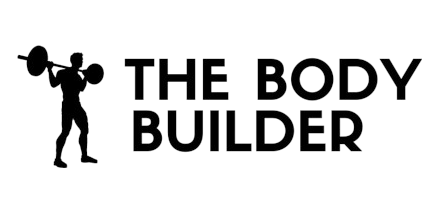Shoulder Raise
Shoulder Raises are an effective exercise for toning and strengthening the muscles in your shoulders. By performing this exercise, you can improve posture and shoulder mobility. To do a Shoulder Raise, begin by relaxing your arms to your sides and then raise your shoulders up toward your ears. Hold this position for a few seconds before slowly lowering them back down. This exercise can be done with or without weights for an added challenge.
Type:
Stretching
Muscles Used:
Shoulders
Level:
Intermediate
Equipment:
Body Only
Benefits Of This Exercise
- Strengthen and tone shoulder muscles.
- Improve posture and shoulder mobility.
- Increase shoulder flexibility and range of motion.
- Reduce the risk of shoulder injury.
- Improve overall upper body strength.
- Can be done with or without weights for an added challenge.
Step by Step Instructions For Shoulder Raise
- Start by standing or sitting in a comfortable position.
- Relax your arms and let them hang naturally by your sides.
- Gently raise your shoulders up towards your ears, feeling the tension in your upper back and neck.
- Hold this position for a few seconds, allowing your muscles to stretch and release.
- Slowly lower your shoulders back down to their starting position.
- Repeat this movement several times, focusing on the sensation of tension and release in your shoulders.
- Remember to breathe deeply and relax your body as you perform this exercise.
Warm Up Tips
- Start by standing with your feet shoulder-width apart and your arms relaxed at your sides.
- Slowly raise your shoulders up toward your ears, focusing on using your shoulder muscles to lift the weight.
- Hold the raised position for a few seconds, feeling the tension in your shoulders.
- Slowly lower your shoulders back down to the starting position, keeping your movements controlled and deliberate.
- Repeat this exercise for a set number of repetitions or for a specific amount of time.
- If you want to increase the intensity of the exercise, you can hold onto dumbbells or other weights in each hand.
- Remember to breathe throughout the exercise, inhaling as you raise your shoulders and exhaling as you lower them.
- Focus on maintaining good posture throughout the exercise, keeping your spine straight and your core engaged.
- Listen to your body and stop if you experience any pain or discomfort.
- Gradually increase the weight or repetitions as you become stronger and more comfortable with the exercise.
Shoulder Raise Safety Tips
- Start with proper form: Stand with your feet shoulder-width apart and keep your back straight.
- Relax your arms: Let your arms hang naturally by your sides.
- Raise your shoulders: Slowly lift your shoulders up towards your ears.
- Hold the position: Pause for a few seconds at the top of the movement.
- Lower your shoulders: Slowly lower your shoulders back down to the starting position.
- Repeat: Complete the desired number of repetitions.
- Start without weights: If you are a beginner, it is recommended to start without weights to avoid strain or injury.
- Add weights gradually: As you become more comfortable and stronger, you can gradually add weights to increase the intensity of the exercise.
- Listen to your body: If you experience any pain or discomfort, stop the exercise immediately and consult a healthcare professional.
- Breathe properly: Inhale as you raise your shoulders and exhale as you lower them.
- Warm up before and cool down after: Always warm up your body with some light cardio and stretching before starting the exercise, and cool down with some stretching afterwards to prevent muscle soreness.
Incorporating Into Other Workouts
Shoulder Raises can be incorporated into your workouts in several ways. Here are a few suggestions:
1. Warm-up: Start your workout routine by performing a few sets of Shoulder Raises without weights. This will help activate and warm up your shoulder muscles, preparing them for the upcoming exercises.
2. Superset: Pair Shoulder Raises with another upper body exercise, such as bicep curls or lateral raises. Perform a set of Shoulder Raises followed immediately by the second exercise, without resting in between. This will help increase the intensity of your workout and target multiple muscle groups simultaneously.
3. Circuit training: Include Shoulder Raises as one of the exercises in a circuit training routine. Create a circuit consisting of different exercises, such as squats, push-ups, and plank holds. Perform each exercise for a set amount of time or reps before moving on to the next one. Include Shoulder Raises in the circuit to work on your shoulder strength and mobility.
4. Weighted Shoulder Raises: Once you have mastered the technique without weights, you can add resistance by holding dumbbells or using resistance bands. Start with lighter weights and gradually increase the intensity as your strength improves. Incorporating weights will provide an additional challenge and help build muscle.
5. Shoulder-focused workout: Dedicate a specific day or portion of your workout routine to focus solely on your shoulders. Include exercises like Shoulder Raises, lateral raises, overhead presses, and front raises. Perform multiple sets and reps of each exercise to effectively target and strengthen your shoulder

